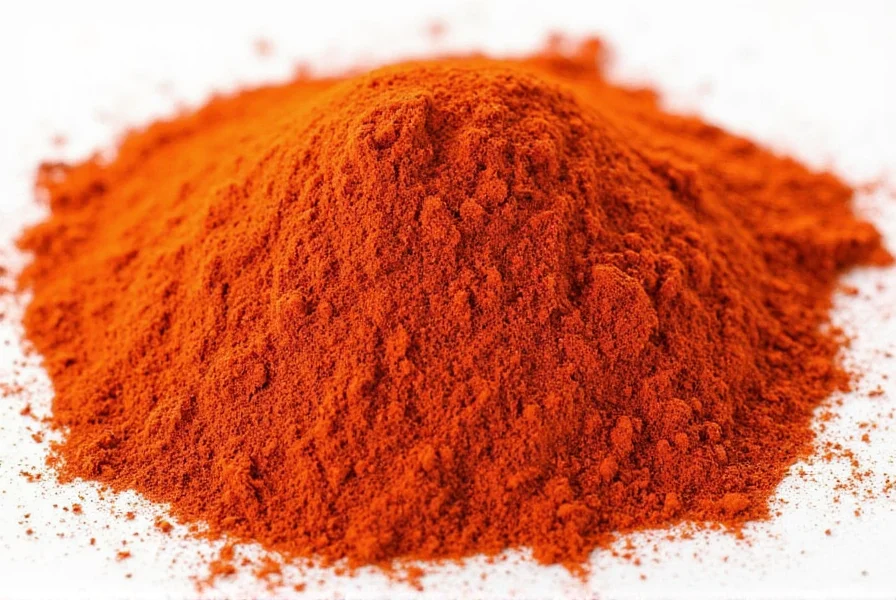Understanding the nuances of hot paprika can transform your cooking from bland to brilliant. This versatile spice bridges the gap between pure heat sources like cayenne pepper and the purely decorative sweet paprika, offering both visual appeal and a gentle warmth that enhances rather than dominates flavors.
What Exactly Is Hot Paprika?
Hot paprika consists of dried and finely ground peppers from the Capsicum annuum family, specifically selected varieties that provide measurable heat while maintaining the characteristic sweet, slightly smoky flavor of traditional paprika. The heat level typically ranges from 500 to 1,000 Scoville Heat Units (SHU), placing it significantly milder than cayenne pepper (30,000-50,000 SHU) but noticeably spicier than sweet paprika (0 SHU).
The specific peppers used vary by region:
| Region | Pepper Varieties Used | Heat Level (SHU) | Flavor Notes |
|---|---|---|---|
| Hungarian | Kulonleges, Erős | 500-1,000 | Earthy, slightly smoky, with moderate heat |
| Spanish | ñora, Jarra | 1,000-2,000 | Sweeter with brighter heat |
| Serbian | Delic, Hot | 1,500-2,500 | Robust, fruit-forward heat |

Hot Paprika vs Sweet Paprika: Key Differences
Many home cooks confuse hot and sweet paprika, but understanding their differences is crucial for recipe success. The primary distinction lies in the pepper varieties used during production:
- Sweet paprika uses only sweet pepper varieties with zero capsaicin (the compound that creates heat)
- Hot paprika incorporates specific hot pepper varieties that provide measurable heat while maintaining the characteristic paprika flavor
- Smoked paprika (pimentón) may be sweet or hot, with the heat level determined by the pepper varieties used
When substituting between these varieties, remember that hot paprika brings both color and heat to dishes, while sweet paprika contributes only color and flavor without spiciness. This makes hot paprika essential for authentic Hungarian goulash, where the subtle heat balances the rich meat flavors.
Culinary Applications of Hot Paprika
Hot paprika shines in dishes where you want both vibrant color and gentle warmth without overwhelming heat. Professional chefs value it for several specific applications:
Meat Rubs and Marinades
Hot paprika forms the base of many dry rubs for meats, particularly in Central European cuisine. Its moderate heat penetrates meat gradually during cooking, creating complex flavor layers without the sharp bite of pure capsaicin sources. For best results, combine hot paprika with garlic powder, onion powder, and a touch of black pepper.
Sauces and Stews
When making tomato-based sauces or hearty stews like goulash, add hot paprika early in the cooking process to allow its flavors to meld with other ingredients. Unlike fresh chilies, hot paprika's heat becomes more integrated and rounded as it simmers, creating a harmonious warmth throughout the dish.
Egg Dishes
Hot paprika elevates simple egg preparations like deviled eggs or scrambled eggs with both visual appeal and subtle heat. Sprinkle it on top of finished egg dishes for a pop of color and gentle warmth that complements the richness of the eggs.

Substituting Hot Paprika: Practical Solutions
Ran out of hot paprika? These substitutions maintain both flavor and heat profiles:
- Sweet paprika + cayenne: Mix 1 teaspoon sweet paprika with 1/8 teaspoon cayenne for every teaspoon of hot paprika required
- Chipotle powder: Use half the amount (it's significantly hotter and smokier)
- Crushed red pepper flakes: Use 3/4 teaspoon for every teaspoon of hot paprika, but expect less color contribution
- Hot smoked paprika: Substitute 1:1 but be aware of the stronger smoky element
When substituting, always add gradually and taste as you go. Hot paprika's unique value lies in its balanced heat-to-flavor ratio, which many substitutes struggle to replicate perfectly.
Storage Tips for Maximum Freshness
Paprika loses potency faster than many spices due to its high oil content. To preserve hot paprika's vibrant color and heat:
- Store in an airtight container away from light and heat
- Keep in the refrigerator or freezer for extended shelf life (up to 2 years)
- Check freshness by rubbing a small amount between your fingers - fresh paprika will leave a colored oil stain and have a strong aroma
- Replace when the color fades from deep red to dull orange or brown
Properly stored hot paprika maintains both its heat level and distinctive flavor profile significantly longer than when stored at room temperature.
Frequently Asked Questions
Is hot paprika very spicy compared to other chili powders?
Hot paprika ranges from 500-1,000 Scoville units, making it significantly milder than cayenne pepper (30,000-50,000 SHU) or red pepper flakes. It provides noticeable warmth without overwhelming heat, sitting between sweet paprika and cayenne on the spice spectrum.
Can I substitute hot paprika for smoked paprika in recipes?
You can substitute hot paprika for smoked paprika, but you'll lose the distinctive smoky flavor. For best results, add a pinch of liquid smoke or use chipotle powder (which is smoked and hot) at half the amount to approximate both the heat and smokiness.
Does cooking affect hot paprika's heat level?
Yes, hot paprika's heat becomes more integrated and slightly milder when cooked. Unlike fresh chilies where heat intensifies with cooking, paprika's ground form allows its capsaicin to distribute evenly and mellow. For maximum heat impact, add hot paprika toward the end of cooking.
What dishes absolutely require hot paprika for authenticity?
Traditional Hungarian goulash, chicken paprikash, and certain Spanish chorizo recipes specifically call for hot paprika. These dishes rely on its unique combination of color, subtle heat, and earthy flavor that sweet paprika cannot provide. Authentic versions won't achieve the proper flavor profile without it.
How can I tell if my hot paprika has gone bad?
Expired hot paprika loses its vibrant red color (turning dull orange or brown), has little to no aroma when rubbed between fingers, and fails to leave an oily stain. While it won't make you sick, it won't contribute proper flavor or heat to your dishes. Properly stored, hot paprika maintains quality for 1-2 years.











 浙公网安备
33010002000092号
浙公网安备
33010002000092号 浙B2-20120091-4
浙B2-20120091-4